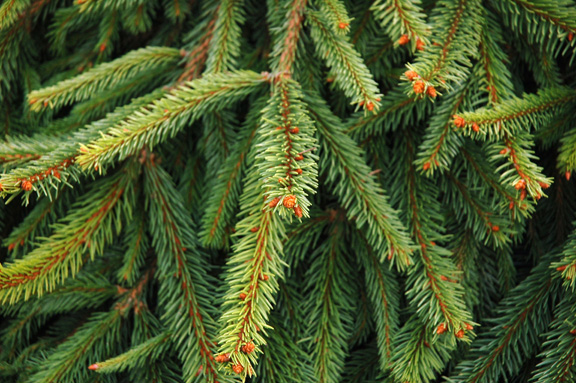| General Description | This plant has a weeping form and is often confused or mistaken with 'Pendula'. Reflexa has dark green foliage, with medium texture. If this plant is not staked it will become a ground cover and not reach its estimated height. |
| ID Characteristic | This plant is a single stemmed trunk and its weeping form is trained to shape. New growth has orange bark. Needles are sharp, and leave pegs in the branches when pulled off. |
| Shape | Loose, unkempt low growing form. |
| Landscape | This plant can be used as an accent plant or on its own as a specimen plant. When planting in groups it should be staked to give a more dramatic look to your garden. It could also be used as a substitute for a medium height spreading shrub. |
| Propagation | This plant must be grafted to maintain its pendulous form. A side graft is taken and attached to a seedling standard P.abies. They are best grown in a mix of sand and peat. Grafts should be done in late winter. |
| Cultivation | This specimen performs best in moist, sandy, acidic, well drained soils, but can be planted in other soils as long as it has adequate moisture. Prefers a cold climate but plant in full sun. If planted in shade the branches will become thin and scarce. |
| Pests | Aphids, galls, heart rot, mites, nematodes and scale insects. |
| Notable Specimens | The Arboretum, University of Guelph, Guelph, Ontario, Canada. |
| Habitat | Horticultural origin. |
| Bark/Stem Description | The mature bark is shaggy and exfoliating and mainly hidden by the weeping of the branches. The new bark is orange. |
| Flower/Leaf Bud Description | Narrowly conical. |
| Leaf Description | This specimen has needles that are small 2.5 cm in length, sharp, spiraled, glabrous and lustrous. They are a bright to deep green. |
| Flower Description | Flowers are monoecious and inconspicuous. Males are axillary and infrequent, while females are terminal. They are spread on the crowns of trees and are reddish pink in colour. |
| Fruit Description | The light brown cones are 10-15 cm long, ovoid, oblong-cylindrical in shape with 2 winged seeds to each scale. |
| Colour Description | It has bright to dark green needles, that turn browny-orange when they die off. Has gray brown trunk bark, with a reddish brown stem. |
| Texture Description | Medium texture and is softer then 'Pendula'. |
.jpg)
